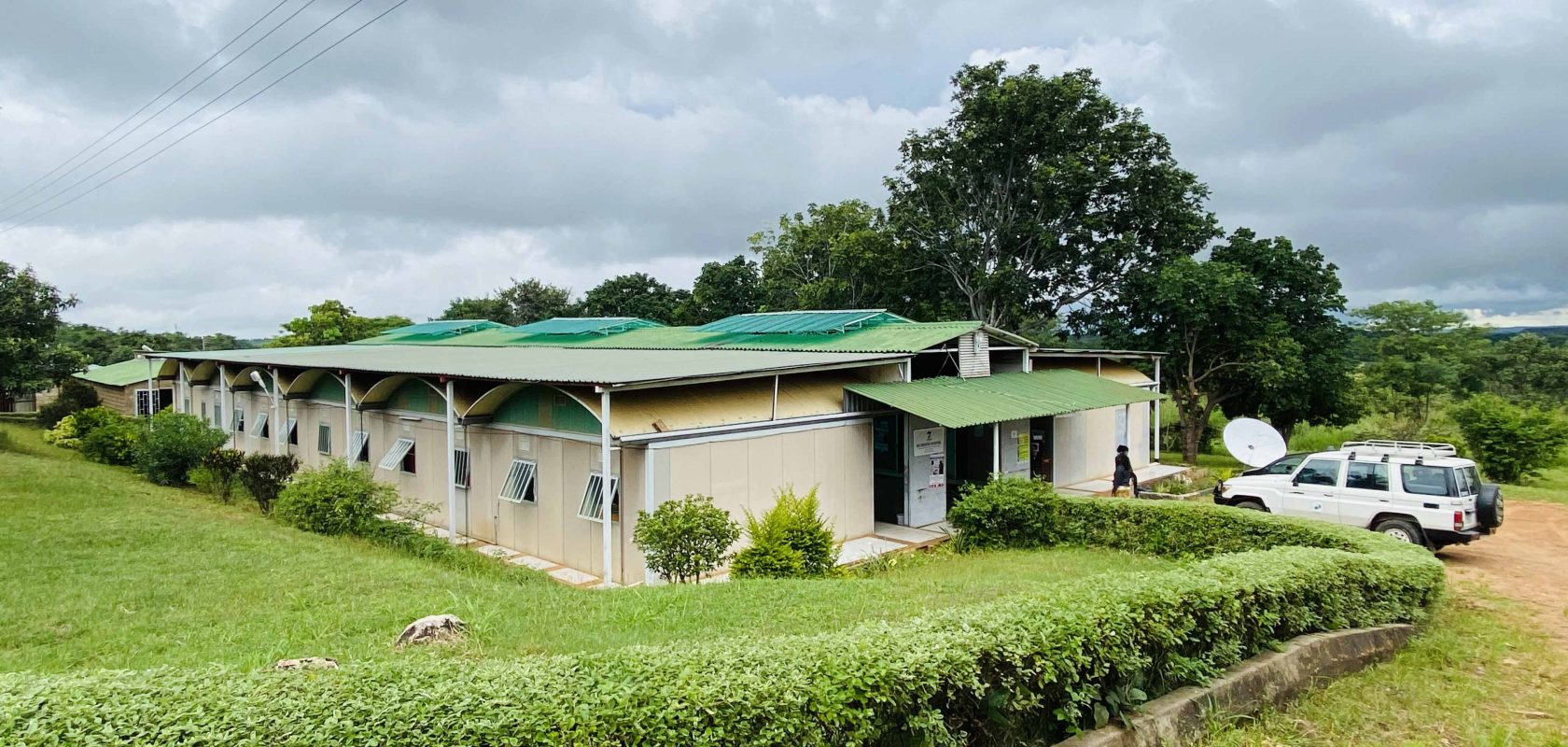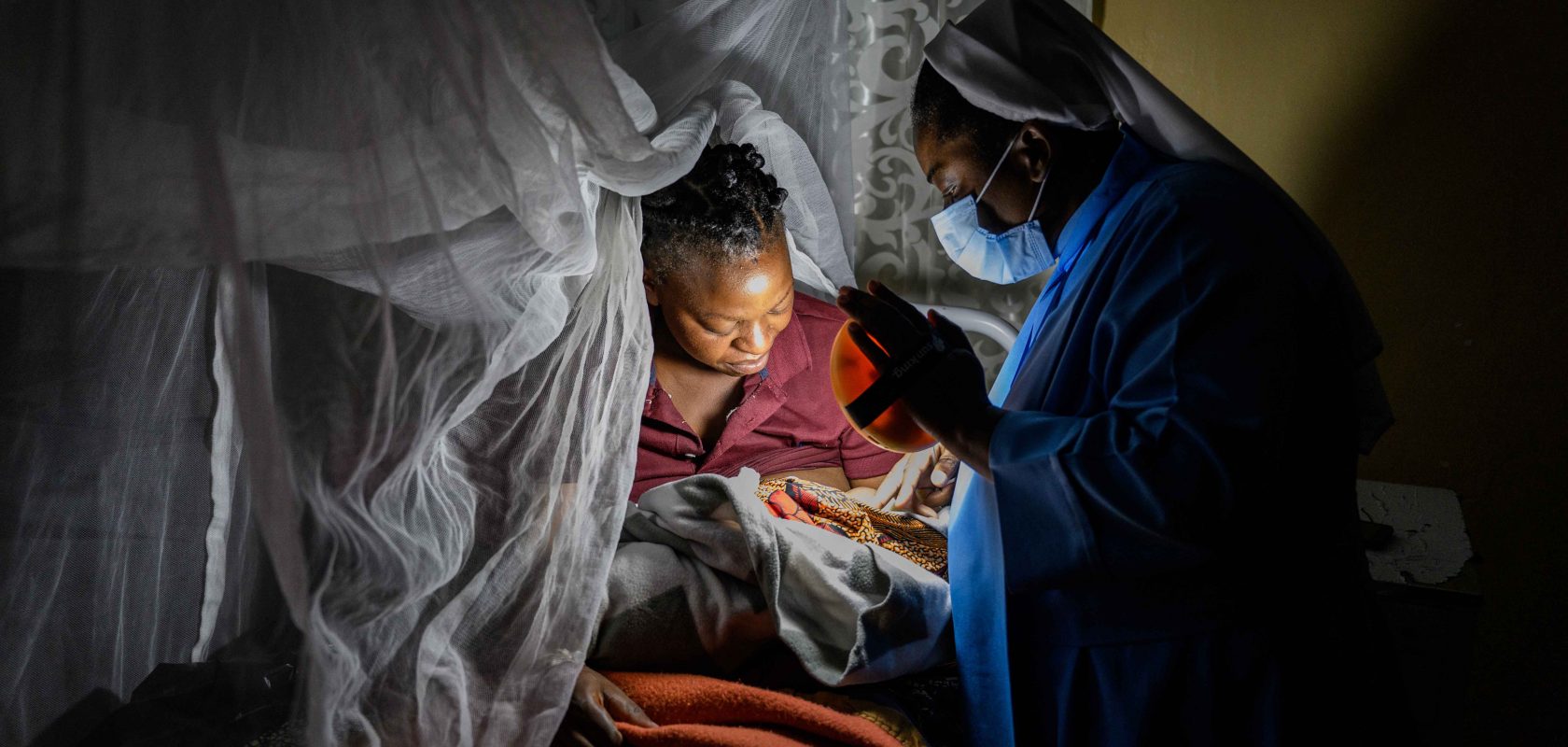Sister Odilia Chilombo, the In-charge at Zambia Helpers Society Rural Health Clinic is a warm woman with a bright smile. She has worked at the health facility located in the southern part of Lusaka Province since 2017. Even though the clinic is connected to the electric grid it suffers from regular power outages affecting life threatening medical procedures.
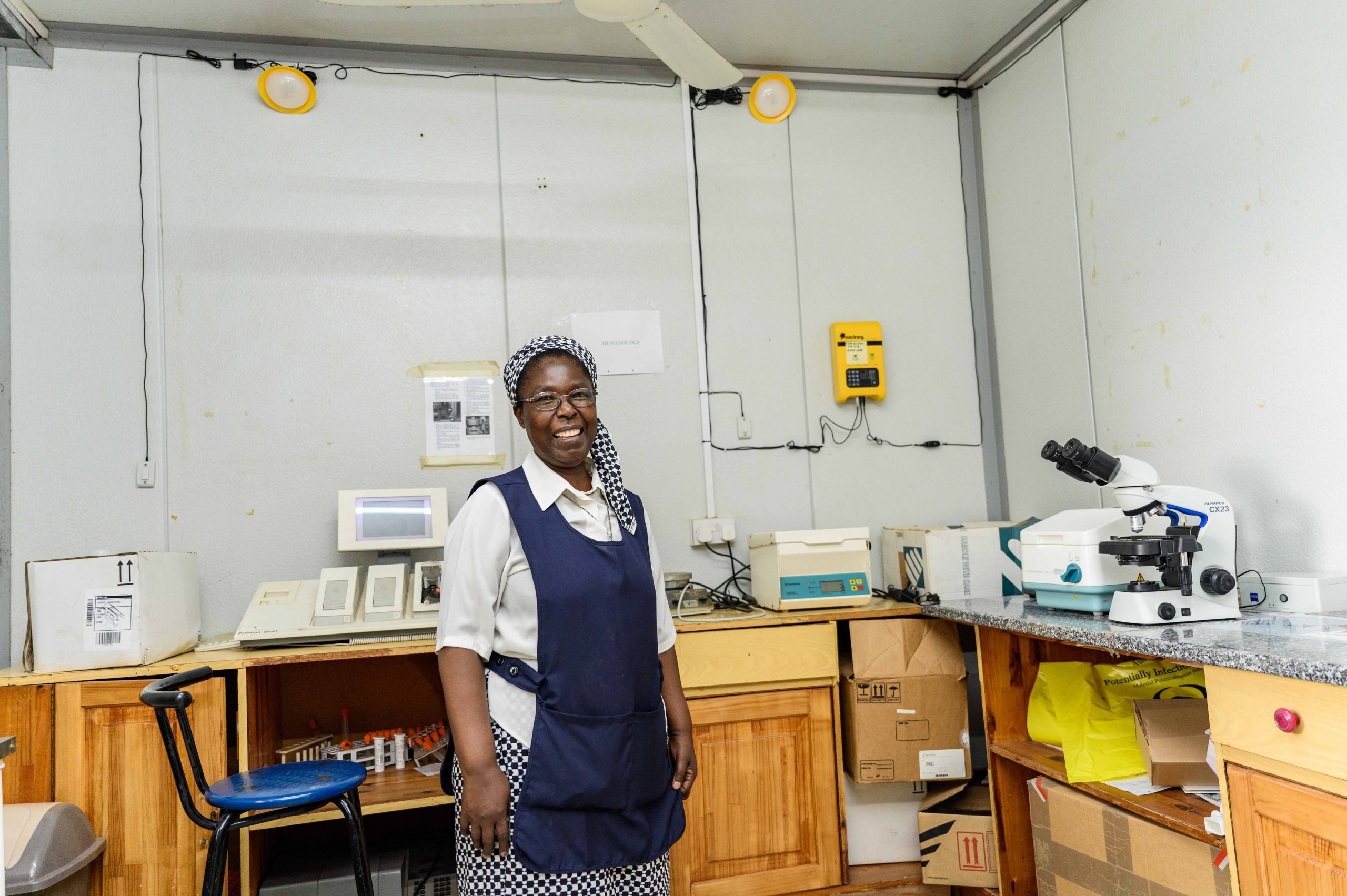
Sister Odilia Chilombo, the In-charge at Zambia Helpers Society Rural Health Clinic in the clinic’s laboratory. Photo: SolarAid/Jason J Mulikita
“When the power goes, you are handicapped. The lab cannot work. We have some power backups, but we don’t have funds to buy diesel (…) The patients, they know that if there is no electricit… when the power is off even the water is off, because we use electric pumps.” explains Sister Chilombo.
The Frontier Technology Livestreaming Programme, which is funded by the Foreign, Commonwealth and Development Office has partnered with SolarAid, and in December 2020, we delivered the latest plug-and-pay, PAYG solar systems, as well as energy-efficient medical appliances and a solar chargeable television to the clinic. The medical equipment included a solar powered non-contact infrared thermometers, pulse oximeter, foetal doppler and digital blood pressure monitor. The SolarAid team paid a visit to the clinic to see how the solar products are working.
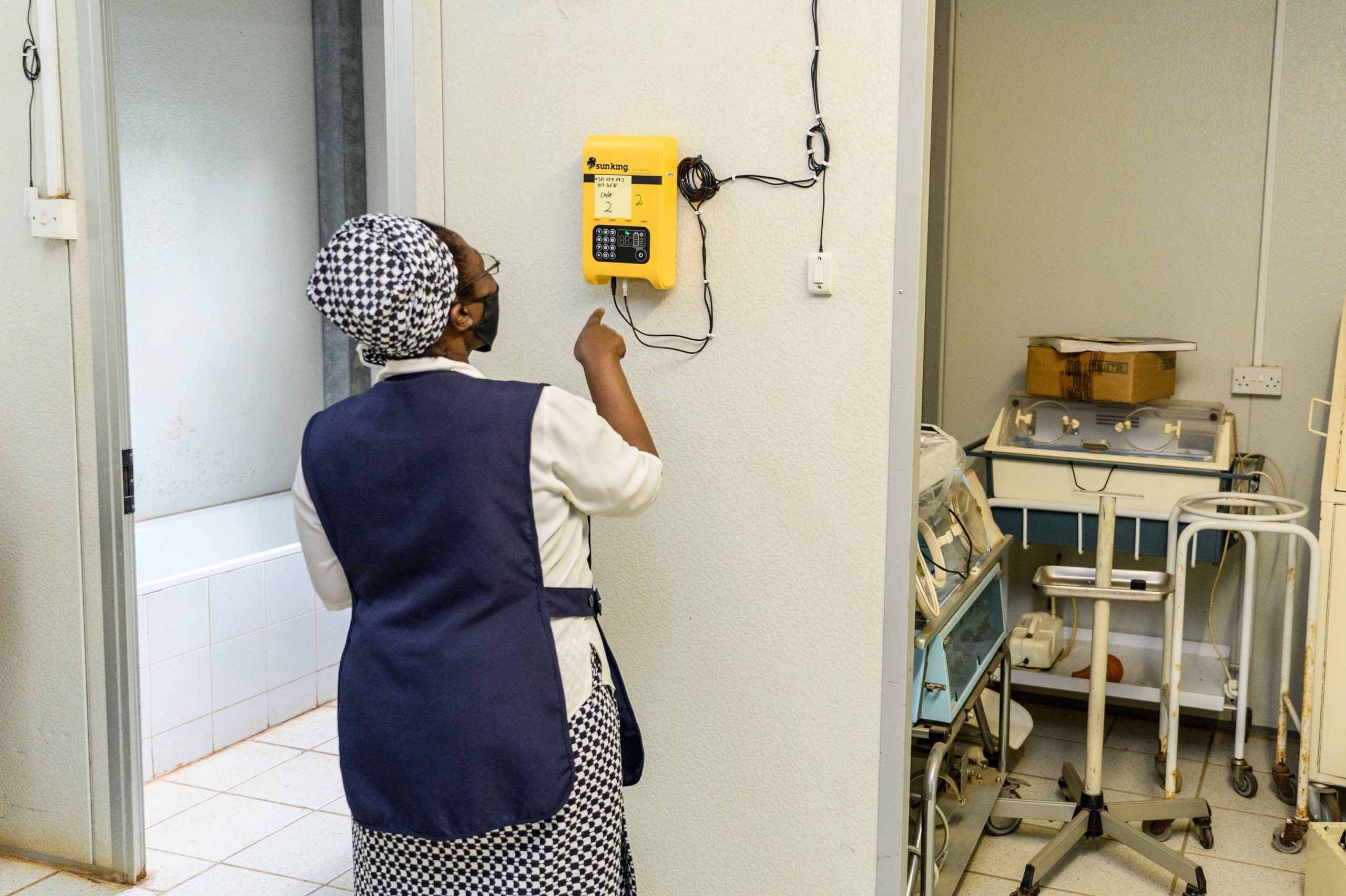
Photo: SolarAid/Jason J Mulikita
“The television has been very helpful in our presentations for the District Integrated Meetings, every member is able to view what is being presented.” says Sister Chilombo. The staff exclaimed how excited they were to receive a television that is USB enabled. The television has been helpful with presenting information for the COVID-19 workshops that are used to inform people on current guidelines and measures to curb the growing pandemic.
Sister Chilombo also expressed improvements in their diagnosis of patients as a result of the medical equipment that was provided, specifically the foetal doppler being better at analysis because both the medical attendant and the mother are now able to hear the heartbeat of the foetus. “The foetal doppler heartbeat is audible, especially in the third trimester, it is loud” says Sister Chilombo. Nurse Mercy Namwinga agrees, “It has improved our work, the foetal doppler is faster and louder, you are able to get the foetal heart rate clearer.”
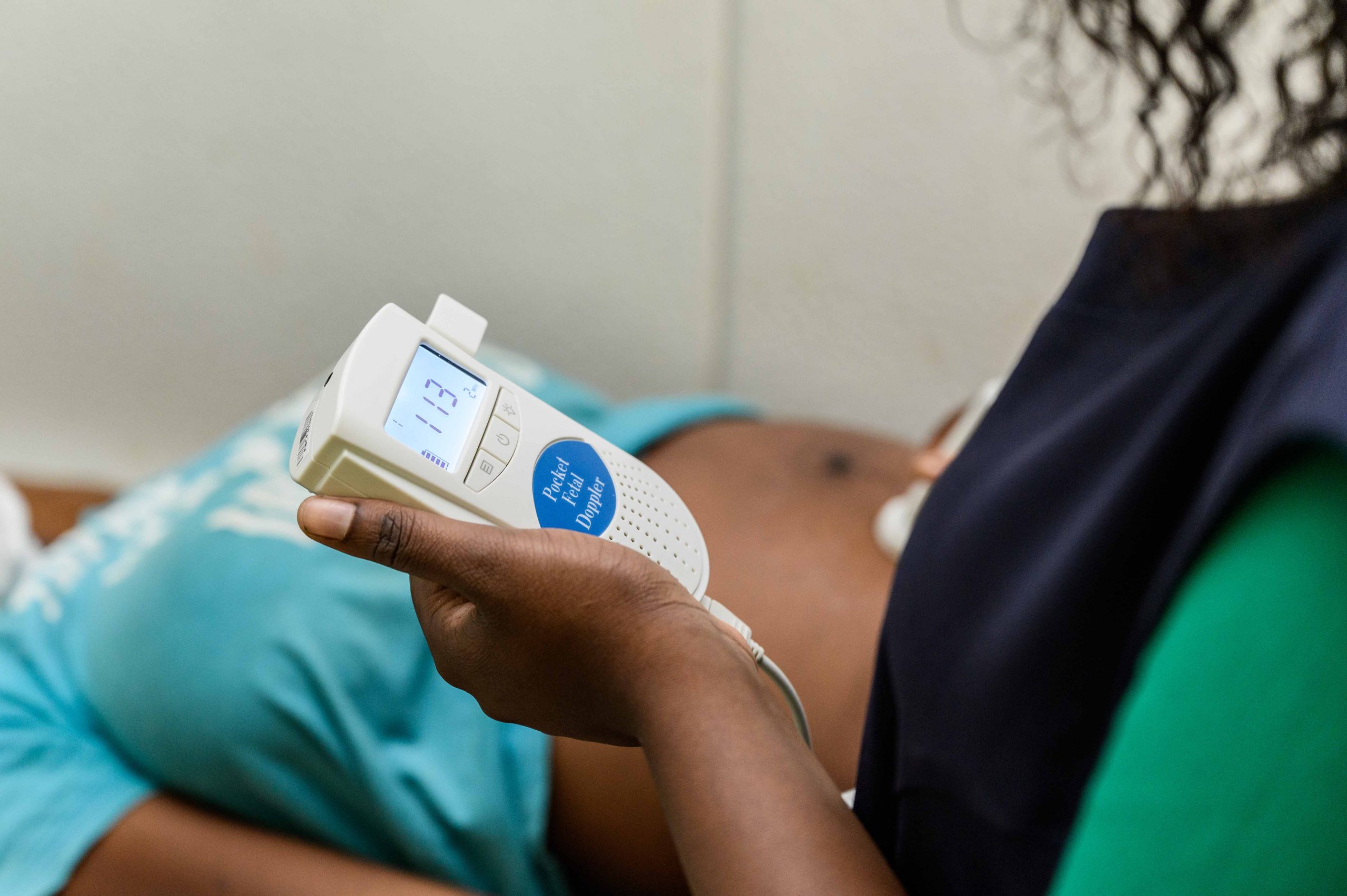
Nurse Mercy Namwinga is using the foetal doppler. Photo: SolarAid/Jason J Mulikita
“When something like that is put [solar products], it is something that is a step forward to the facility, when we are working. That what it means for me. It’s a step forward.”
“Thank you to SolarAid for what you have done, you have uplifted us from where we were to another level. We are hoping to continue working with you to support us as we serve the people.”
No health clinic should be left in the dark. Together, we can End the Darkness.
